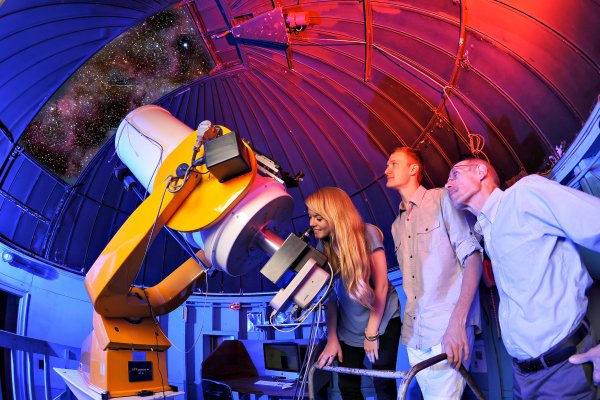Seeing the bigger picture
Adam Gibson-Even, Ph.D.
Assistant Professor of Physics
Since childhood, Professor Adam Gibson-Even ’00, Ph.D. has been fascinated by the big questions in life: Where did the universe come from? How did we get here? What are the fundamental forces? What are things made of?
Now he uses his position at Valpo to help students explore the same mysteries.
“In the classroom, I am pushing to the extremes and asking big questions,” Professor Gibson-Even says. “We’re not just looking at the nuts and bolts of how to solve particular problems. We’re trying to see the bigger picture.”
Though Professor Gibson-Even teaches students the nuts and bolts applying algebra and calculus to questions of motion and energy he reminds them that they are assembling the toolkit they’ll need to address more cutting-edge questions. One way he does that is by drawing on his own career in particle physics, including his work at the world’s two largest particle accelerators.
“Traditionally, when teaching about the conservation of momentum, the instructor would talk about pool balls or hockey pucks on air tracks,” he explains. “From my research background, the first thing I think of is colliding electrons or positrons or protons. I hope students get excited with me to apply math to some of these cutting-edge research frontiers.”
Professor Gibson-Even began his research when he was a student at Valpo, working for two summers with Valpo professors at the Relativistic Heavy Ion Collider. Those same professors are now his research collaborators, and each summer they hire several students to join them at RHIC. The team’s research probes the inner workings of protons, specifically the spin of the quarks and gluons.
Professor Gibson-Even says the research continues to meet his desire to ask big questions.
“The proton is the building block of basically all the world around us. All atoms have nuclei with protons in them,” he says. “We have known this for 100 years, and we understand a lot; but there are fundamental things we don’t understand. These are big puzzles where our research can play a big part.”
He adds that physicists have learned “fantastically lots” in modern colliders and laboratories, but that those tools only allow them to study about five percent of the universe’s total energy. Dark matter accounts for another 20 percent, and dark energy another 75 percent.
“The big questions will be with us for a while and will make what we know now look pretty small,” he says. “I would love for some of my students to answer these questions, and I hope to have something more to say in the next 30 years.”
